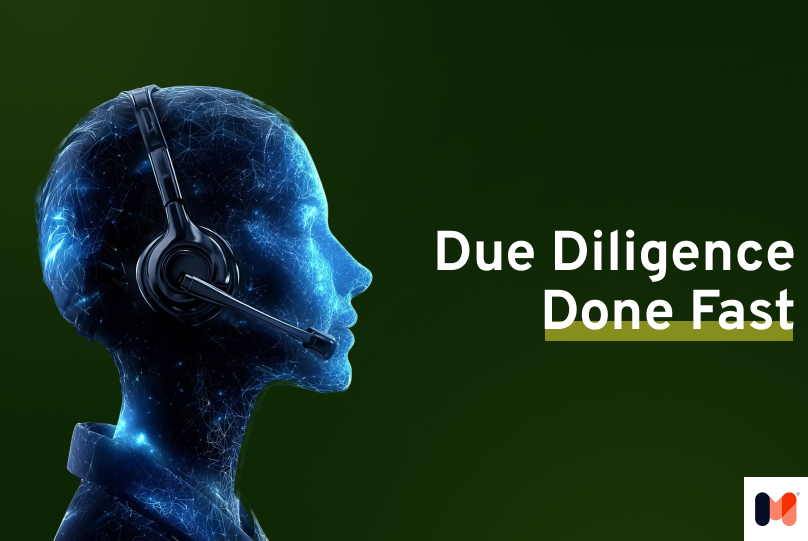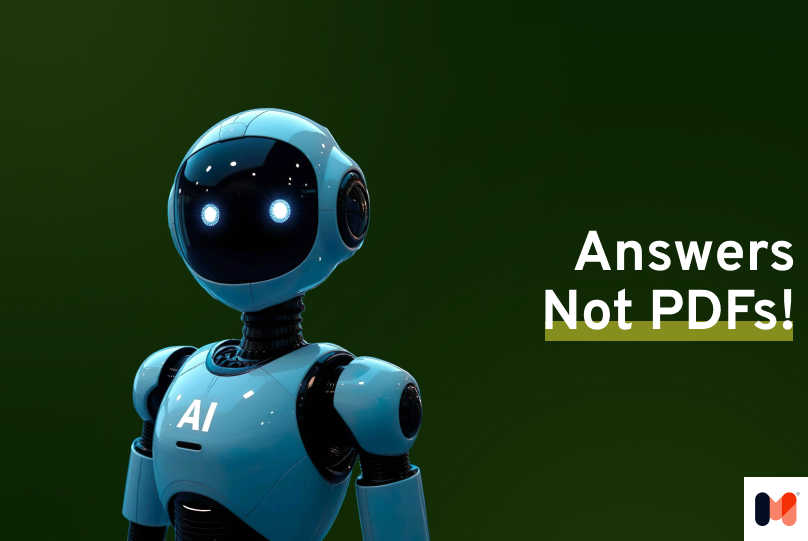Introduction
In the rapidly advancing field of artificial intelligence (AI), understanding the financial demands and resource allocations is crucial for a successful AI project. Much like how microservices revolutionized backend development through modularization, AI applications require thoughtful consideration of their development costs to ensure scalability, efficiency, and maintainability within budget constraints.
This guide explores the diverse aspects of AI development costs, providing insights into key factors that influence pricing and how to effectively manage your budget during the AI project lifecycle. By examining fundamental components, from initial research to implementation, you will gain a comprehensive understanding of the AI development cost matrix, enabling better financial planning and execution.
Understanding Artificial Intelligence costs

AI development involves numerous stages and stakeholders, each contributing to the overall cost of bringing an AI solution to fruition. The most significant components contributing to costs include the acquisition of data, development of algorithms, testing, and integration with existing systems.
AI Research and Prototyping: The initial phase requires data collection, algorithm selection, and model architecture design, which vary broadly based on the complexity and objective of the project.
Development and Testing: Developing AI systems entails iterative processes of model training, tuning, and evaluation. This phase often involves significant computational resources, translating to higher costs.
Integration and Deployment: Once verified, AI models need to be seamlessly integrated into existing IT environments, necessitating further resources and potentially additional development.
Key Factors Affecting AI Project budget

Several factors significantly influence the cost of AI software development:
Project Scale and Complexity: Larger projects dealing with complex datasets or requiring custom solutions will understandably incur higher expenses.
Technology and Tools: The selection of frameworks and tools can affect costs. Open-source libraries, although cost-effective, might still require expert handling.
Expertise and Labor Costs: Skilled AI developers and data scientists are essential, with their expertise representing a significant part of the budget.
Real-World Examples of AI Project Costs

Chatbot Implementation
A smaller-scale AI project like a customer service chatbot has distinct cost considerations. The initial outlay may cover NLP model development, integration with customer databases, and user interface design. Depending on the type of AI used—whether rule-based, machine learning-powered, or generative AI—the cost of artificial intelligence varies significantly.
For businesses opting for custom AI development, the total cost includes not only software but also infrastructure costs such as cloud services or dedicated AI servers. Many companies reduce expenses by hiring remote developers or working with an AI app development company to streamline the development time. In 2025, AI chatbots will continue to evolve, further affecting pricing models and implementation costs.
Image Recognition System
Implementing an image recognition system requires high-quality image datasets and advanced computational resources for model training, potentially increasing the budget due to specialized software and hardware costs. Deep learning models used for image recognition often demand significant AI infrastructure, including powerful GPUs or cloud-based solutions, which impact the cost estimation of such projects.
Additionally, ongoing AI development time plays a crucial role in budgeting, as training and fine-tuning models require extended project duration. Companies looking for a custom AI solution may need to balance performance and affordability while leveraging AI tools that optimize processing efficiency. Cost savings may be achieved by selecting efficient AI frameworks or outsourcing specific AI development projects to specialized firms.
AI-Powered Virtual Assistant
A virtual assistant powered by AI is another common AI initiative with variable costs. Whether for personal use or enterprise applications, developing such a system requires investments in speech recognition, intent detection, and contextual understanding. Off-the-shelf AI-powered assistants may lower costs, but businesses requiring custom AI development will need to consider software development cost, AI infrastructure, and maintenance expenses.
The cost in 2025 for developing virtual assistants will likely be influenced by advancements in generative AI and automation. The impact of AI in customer service and business operations is expected to grow, leading to an AI arms race among companies looking to integrate the most advanced solutions. By leveraging third-party AI platforms or working with an AI app development company, businesses can reduce total cost while benefiting from cutting-edge AI capabilities.
AI in Fraud Detection
AI-driven fraud detection is a crucial application for financial institutions, e-commerce platforms, and cybersecurity firms. The cost of artificial intelligence in fraud detection includes acquiring vast datasets, training deep learning models, and maintaining real-time monitoring systems. Infrastructure costs are also a factor, as these systems require high processing power and cloud-based AI platforms. Companies investing in custom AI solutions for fraud prevention often balance cost savings with the need for accuracy and speed in identifying fraudulent transactions.
Predictive Maintenance in Manufacturing
Manufacturers are increasingly using AI to predict equipment failures before they occur, reducing downtime and maintenance costs. The AI development projects in this sector involve AI tools that analyze sensor data, detect anomalies, and forecast potential issues. The software development cost includes model training and integration with existing industrial systems, while hardware costs cover sensors, IoT devices, and cloud computing for data storage and processing. The total cost of AI-driven predictive maintenance depends on factors such as project duration, system complexity, and the required level of automation.
Components Influencing AI Development Costs

AI development costs are shaped by various factors impacting the transition of AI solutions from ideation to completion. By comprehending the specifics of each component, businesses can devise more accurate budgeting strategies.
Research and Development
Before an AI implementation takes form, substantial investment in research is necessary. This phase involves data acquisition and analysis, seamless model testing, and algorithm optimization to align with the project's objectives. The complexity of AI research varies based on project scope, required innovations, and the resources allocated to refining AI models.
Platform and Integration
Deploying AI software requires robust platform selection and integration efforts. Opting for scalable, adaptive AI infrastructure and ensuring compatibility with existing systems can heavily influence project pricing. Selecting the right AI tools to support seamless deployment and continuous improvements is crucial to minimizing artificial intelligence cost over time.
AI Infrastructure and Hardware Requirements
The choice of AI infrastructure significantly impacts development costs. On-premise solutions require investments in GPUs, servers, and storage, while cloud-based alternatives provide scalability at varying price points. The complexity of AI building efforts increases when handling large-scale models that demand extensive computing power.
AI Models and Algorithm Complexity
The complexity of AI models determines both the artificial intelligence cost and the budget required for development. Pre-trained models and open-source solutions may reduce expenses, whereas developing proprietary algorithms from scratch entails significant R&D investment. Additionally, the need for continuous retraining and optimization can add to ongoing costs.
AI Software Development and Customization
Building AI software involves selecting appropriate frameworks, coding machine learning pipelines, and customizing solutions for specific business needs. The building phase includes fine-tuning model accuracy, improving performance, and integrating AI tools for automation and decision-making. Customization levels influence the artificial intelligence cost, with tailored solutions typically requiring higher budget allocations.
Implementation and Deployment Costs
AI implementation involves model deployment, API integrations, and ensuring system-wide compatibility. The cost of deployment depends on infrastructure choices, operational scalability, and security requirements. Optimizing AI infrastructure and leveraging automation can enhance efficiency while reducing total deployment costs.
AI Tools and Maintenance Expenses
Maintaining AI tools involves continuous monitoring, retraining models, and updating algorithms to adapt to evolving business needs. Post-deployment maintenance is a crucial aspect of AI projects, with long-term support costs varying based on system complexity and real-time data processing requirements.
Navigating Regulatory Compliance
Navigating the landscape of regulatory compliance is integral for AI deployments, as mishaps can incur significant costs. It is vital to allocate part of the budget to compliance activities that uphold legal standards and mitigate risks.
Anticipating Operational and Maintenance Expenses

Estimation Methods for AI Development
Accurate cost projections for AI projects can be achieved using specialized estimation tools. Employing agile and lean methodologies facilitates budget flexibility and cost control. After all, AI solutions are hard to be precise in estimations. The most vital things are data and specific business requirements. Having all setup we can somehow predict the cost by budgeting days of work. Here is simple list of some widely-known systems and potential costs:
Basic AI Solutions: $20,000 - $80,000 for chatbots, recommendation systems, and basic image recognition
Advanced AI Solutions: $50,000 - $150,000 for risk management, personalized learning, and fraud detection systems.
Custom AI Solutions: $100,000 - $500,000+ for advanced trading platforms and medical diagnosis systems.
Crafting Cost-Effective AI Solutions
Artificial intelligence is transforming business operations and customer interaction models globally. However, the costs associated with developing AI solutions can sometimes be prohibitive, necessitating a comprehensive understanding of all influencing factors for effective budgeting.
Optimize Cloud Spending: Select cloud providers offering flexible pricing, scalability, and AI support. Use strategies such as right-sizing, auto-scaling, and managed services to maximize cloud expenditures. Implement cost monitoring tools, budget alerts, and resource use policies to promote efficient financial management throughout the development lifecycle
Use Affordable AI Tools: Many affordable AI tools are designed specifically for startups and small businesses, typically offering subscription-based pricing models. However, you can't forget about open-source models! Open-source AI solutions, such as TensorFlow, PyTorch, and Hugging Face models, provide cost-effective alternatives without licensing fees. These tools enable businesses to experiment, customize, and deploy AI applications without significant upfront investments. Additionally, leveraging cloud-based AI services with pay-as-you-go pricing can further reduce costs while maintaining scalability. Exploring community-driven AI projects and pre-trained models can also help streamline development while minimizing expenses.
Identify if AI is Ever Needed: Many IT products can be crafted without AI and handle all needed business objectives with simple algorithms and conditions. Before investing in AI, companies should assess whether traditional rule-based systems or automation tools can achieve the same results with lower operational costs. Implementing AI requires evaluating the technology stack, potential additional costs, and the average cost of development and maintenance. Businesses should also conduct pilot projects to test whether AI adds real value before fully committing to AI-driven solutions. The price tag of AI implementation can be high, requiring a skilled development team and ongoing AI management to ensure efficiency. Additionally, some industries may benefit more from AI than others, depending on complexity and data processing needs. Organizations should carefully analyze whether AI-powered services offer a competitive advantage or if cost-effective traditional methods can meet their requirements.
Technological Advancements Impact
Hardware Expenses Reduction: The increasing integration of AI is expected to drive up the production of specialized hardware, which will reduce unit costs. Advances in hardware architecture, such as neuromorphic computing and photonic chips, promise to further reduce expenses and enhance energy efficiency
Improved Development Tools and Pre-built Models: The rapid advancement of AI technology has led to a decrease in development costs.
Specialized Processors: Advancements in hardware and software have been crucial in reducing AI costs. Processors like GPUs and TPUs, designed for intensive computing, have contributed to this reduction
Unlocking Cost-Efficient AI Architectures

When diving into the world of artificial intelligence, choosing the right architecture is akin to selecting a robust framework for system development. This decision heavily influences the AI software development costs, necessitating a methodical approach to balance functionality with budget constraints.
Modular Design with Adaptive AI Frameworks
Incorporating adaptive AI architectures can significantly lower costs by facilitating modular design principles. Similar to stable micro frontend solutions, these frameworks promote the integration of diverse AI modules, ensuring each component aligns with specific project needs—ultimately achieving efficient AI project costs.
Strategic Selection of AI System Components
Just as one would selectively apply frameworks to optimize micro frontend functionality, careful selection of AI system modules can prevent unnecessary expenditure. Investing in scalable and adaptable AI solutions aids in managing AI development costs effectively by allowing organizations to only utilize components critical to their objectives.
Generative AI is reshaping technology by optimizing product development while keeping AI implementation costs manageable. The benefits of AI extend beyond automation, as human expertise remains crucial in interpreting insights and refining solutions. As businesses look to the future, balancing innovation with budget-conscious development ensures that AI applications remain both effective and financially sustainable
— Łukasz Adamczyk, Delivery Manager
Streamlining AI Development in Practice

Comparing Ramp-up and Long-Term Savings
Selecting the right type of AI architecture allows companies to manage both immediate development costs and future financial implications, similar to how enterprise frameworks like Luigi and Piral enhance maintainability and scalability. This strategic foresight should emphasize sustainable growth, mirroring long-term savings in micro frontend applications.
Bridging Integration and Compliance
Harmonizing AI applications with existing systems is as critical as aligning multiple micro frontend frameworks. Ensuring comprehensive compliance not only minimizes legal risks but also reflects a commitment to responsible AI deployment, as regulatory factors play a pivotal role in the total cost of AI systems.
Enhancing AI Development Efficiency with Agile Methodologies
Agile methodologies play a crucial role in streamlining AI development by reducing project complexity and improving adaptability. AI development companies benefit from iterative development cycles, allowing for continuous integration and deployment of AI features. This approach ensures that software development cost is optimized, mitigating risks associated with unexpected expenses and project delays.
Balancing Innovation and Economic Value
A well-structured AI strategy not only focuses on technical advancements but also ensures economic value by aligning AI capabilities with business objectives. Organizations must assess pricing models that balance innovation with cost efficiency, ensuring AI software development cost remains sustainable. Strategic investments in process automation and scalable AI infrastructure lead to long-term financial benefits.
Overcoming Data Expenses in AI Implementation
Data expenses represent a significant portion of AI software development cost, particularly in industries requiring extensive data processing, such as healthcare and finance. AI development companies must implement efficient data management strategies, including cloud-based storage solutions and automated data governance, to control costs. Leveraging AI-driven data optimization techniques enhances both performance and affordability in AI development services.
Conclusion
Navigating AI development costs requires a clear understanding of project requirements, strategic planning, and ongoing management. By identifying key cost factors and utilizing effective budget strategies, businesses can implement AI solutions that provide substantial value without unnecessary financial strain.
This comprehensive guide serves as a foundation to ensure your AI project achieves its goals within budgetary limits, echoing the modular efficiency realized by adopting techniques similar to microservices in software architecture.
Discover more on AI-based applications and genAI enhancements
Artificial intelligence is revolutionizing how applications are built, enhancing user experiences, and driving business innovation. At Mobile Reality, we explore the latest advancements in AI-based applications and generative AI enhancements to keep you informed. Check out our in-depth articles covering key trends, development strategies, and real-world use cases:
- The Role of AI in the Future of Software Engineering
- Unleash the Power of LLM AI Agents in Your Business
- Data Science vs Machine Learning : What's the Difference?
- Generative AI in software development
- Mastering Automated Lead Generation for Business Success
- Scale Business with AI Arbitrage Agency's Solutions
- Generate AI Social Media Posts for Free!
Our insights are designed to help you navigate the complexities of AI-driven development, whether integrating AI into existing applications or building cutting-edge AI-powered solutions from scratch. Stay ahead of the curve with our expert analysis and practical guidance. If you need personalized advice on leveraging AI for your business, reach out to our team—we’re here to support your journey into the future of AI-driven innovation.





